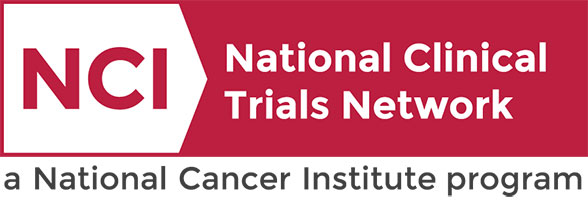Patient Search
 |
 |
|
KaCrole Higgins was diagnosed with breast cancer in 2020. “In May 2020, I found a lump in my breast. I cried. By June, it was diagnosed as breast cancer, triple positive, stage 1A. While getting this cancer diagnosis was devastating, it also became an opportunity. Suddenly, the cancer gave me clarity. It gave me clarity about what was important, what was good in my life, what was toxic in my life, and what I needed to do.” Click below to read more of KaCrole’s story |
If Landon Ryan had been diagnosed with bilateral retinoblastoma 10, 20 or 30 years ago, she might not be here today with nearly perfect vision.Thanks to recent improvements in the treatment for this rare form of cancer that almost exclusively affects children under the age of 5, the diagnosis had the power to change Landon’s life when she was 11 months old, but not to take it — or her eyesight. Click below to learn more about Landon and her story. https://momentum.vicc.org/2022/04/brighter-outlook/ |
A Study to Compare Standard Chemotherapy to Therapy With CPX-351 and/or Gilteritinib for Patients With Newly Diagnosed AML With or Without FLT3 Mutations
This phase III trial compares standard chemotherapy to therapy with liposome-encapsulated daunorubicin-cytarabine (CPX-351) and/or gilteritinib for patients with newly diagnosed acute myeloid leukemia with or without FLT3 mutations. Drugs used in chemotherapy, such as daunorubicin, cytarabine, and gemtuzumab ozogamicin, work in different ways to stop the growth of cancer cells, either by killing the cells, by stopping them from dividing, or by stopping them from spreading. CPX-351 is made up of daunorubicin and cytarabine and is made in a way that makes the drugs stay in the bone marrow longer and could be less likely to cause heart problems than traditional anthracycline drugs, a common class of chemotherapy drug. Some acute myeloid leukemia patients have an abnormality in the structure of a gene called FLT3. Genes are pieces of DNA (molecules that carry instructions for development, functioning, growth and reproduction) inside each cell that tell the cell what to do and when to grow and divide. FLT3 plays an important role in the normal making of blood cells. This gene can have permanent changes that cause it to function abnormally by making cancer cells grow. Gilteritinib may block the abnormal function of the FLT3 gene that makes cancer cells grow. The overall goals of this study are, 1) to compare the effects, good and/or bad, of CPX-351 with daunorubicin and cytarabine on people with newly diagnosed AML to find out which is better, 2) to study the effects, good and/or bad, of adding gilteritinib to AML therapy for patients with high amounts of FLT3/ITD or other FLT3 mutations and 3) to study changes in heart function during and after treatment for AML. Giving CPX-351 and/or gilteritinib with standard chemotherapy may work better in treating patients with acute myeloid leukemia compared to standard chemotherapy alone.
Not Available
III
Not Available
NCT04293562
COGAAML1831
A Study of Amivantamab and FOLFIRI Versus Cetuximab/Bevacizumab and FOLFIRI in Participants With KRAS/NRAS and BRAF Wild-type Colorectal Cancer Who Have Previously Received Chemotherapy
Multiple Cancer Types
The purpose of this study is to compare how long the participants are disease-free (progression-free survival) and and the length of time until a participant dies (overall survival), when treated with amivantamab and chemotherapy with 5-fluorouracil, leucovorin calcium (folinic acid) or levoleucovorin, and irinotecan hydrochloride (FOLFIRI) versus either cetuximab or bevacizumab and FOLFIRI given to participants with Kirsten rat sarcoma viral oncogene/ neuroblastoma RAS viral oncogene homolog (KRAS/ NRAS) and v-raf murine sarcoma viral oncogene homolog B (BRAF) wild-type recurrent, unresectable or metastatic colorectal cancer who have previously received chemotherapy.
Colon,
Rectal
III
Eng, Cathy
NCT06750094
VICC-DTGIT24167
International Penile Advanced Cancer Trial (International Rare Cancers Initiative Study)
Miscellaneous
Miscellaneous
This is an international phase III trial, with a Bayesian design, incorporating two sequential randomisations. It efficiently examines a series of questions that routinely arise in the sequencing of treatment. The study design has evolved from lengthy international consultation that has enabled us to build consensus over which questions arise from current knowledge and practice. It will enable potential randomisation for the majority of patients with inguinal lymph node metastases and will provide data to inform future clinical decisions.
InPACT-neoadjuvant patients are stratified by disease burden as assessed by radiological criteria. Treatment options are then defined according to the disease burden strata. Treatment is allocated by randomisation. Patients may be allocated to one of three initial treatments:
A. standard surgery (ILND); B. neoadjuvant chemotherapy followed by standard surgery (ILND); or C. neoadjuvant chemoradiotherapy followed by standard surgery (ILND).
After ILND, patients are defined as being at low or high risk of recurrence based on histological interpretation of the ILND specimen. Patients at high risk of relapse are eligible for InPACT-pelvis, where they are randomised to either:
P. prophylactic PLND Q. no prophylactic PLND
InPACT-neoadjuvant patients are stratified by disease burden as assessed by radiological criteria. Treatment options are then defined according to the disease burden strata. Treatment is allocated by randomisation. Patients may be allocated to one of three initial treatments:
A. standard surgery (ILND); B. neoadjuvant chemotherapy followed by standard surgery (ILND); or C. neoadjuvant chemoradiotherapy followed by standard surgery (ILND).
After ILND, patients are defined as being at low or high risk of recurrence based on histological interpretation of the ILND specimen. Patients at high risk of relapse are eligible for InPACT-pelvis, where they are randomised to either:
P. prophylactic PLND Q. no prophylactic PLND
Miscellaneous
III
Rini, Brian
NCT02305654
ECOGUROEA8134
Testing Olaparib for One or Two Years, With or Without Bevacizumab, to Treat Ovarian Cancer
Multiple Cancer Types
This phase III trial compares the effect of olaparib for one year versus two years, with or without bevacizumab, for the treatment of BRCA 1/2 mutated or homologous recombination deficient stage III or IV ovarian cancer. Olaparib is a polyadenosine 5'-diphosphoribose polymerase (PARP) enzyme inhibitor and may stop the growth of tumor cells by blocking some of the enzymes needed for cell growth. Bevacizumab is in a class of medications called antiangiogenic agents. It works by stopping the formation of blood vessels that bring oxygen and nutrients to tumor. This may slow the growth and spread of tumor. Giving olaparib for one year with or without bevacizumab may be effective in treating patients with BRCA 1/2 mutated or homologous recombination deficient stage III or IV ovarian cancer, when compared to two years of olaparib.
Gynecologic,
Ovarian
III
Crispens, Marta
NCT06580314
NRGGYNGY036
Surgery With or Without Neoadjuvant Chemotherapy in High Risk RetroPeritoneal Sarcoma
Sarcoma
Sarcoma
This is a multicenter, randomized, open label phase lll trial to assess whether preoperative chemotherapy, as an adjunct to curative-intent surgery, improves the prognosis of high risk DDLPS (dedifferentiated Liposarcoma) and LMS (Leiomyosarcoma) patients as measured by disease free survival.
After confirmation of eligibility criteria, patients will be randomized to either the standard arm or experimental arm.
After confirmation of eligibility criteria, patients will be randomized to either the standard arm or experimental arm.
Sarcoma
III
Davis, Elizabeth
NCT04031677
ECOGSAREA7211
Testing the Addition of the Anti-Cancer Drug Tivozanib to Immunotherapy (Pembrolizumab) After Surgery to Remove All Known Sites of Kidney Cancer
Kidney (Renal Cell)
Kidney (Renal Cell)
This phase III trial compares the effect of adding tivozanib to standard therapy pembrolizumab versus pembrolizumab alone for the treatment of patients with high-risk renal cell carcinoma (RCC). Immunotherapy with monoclonal antibodies, such as pembrolizumab, may help the body's immune system attack the cancer, and may interfere with the ability of tumor cells to grow and spread. Tivozanib is in a class of medications called kinase inhibitors. It works by blocking the action of the abnormal protein that signals tumor cells to multiply. This helps stop the spread of tumor cells. Giving pembrolizumab and tivozanib together may work better than pembrolizumab alone in treating patients with RCC.
Kidney (Renal Cell)
III
Tan, Alan
NCT06661720
ALLUROA032201
Study Assessing Activity of Intravenous (IV) Etentamig Monotherapy Versus Standard Available Therapies in Adult Participants With Relapsed or Refractory Multiple Myeloma
Multiple myeloma (MM) is a cancer of the blood's plasma cells. The cancer is typically found in the bones and bone marrow (the spongy tissue inside of the bones) and can cause bone pain, fractures, infections, weaker bones, and kidney failure. Treatments are available, but MM can come back (relapsed) or may not get better (refractory) with treatment. This is a study to determine change in disease symptoms of etentamig compared to standard available therapies in adult participants with relapsed/refractory (R/R) MM.
Etentamig is an investigational drug being developed for the treatment of R/R MM. This study is broken into 2 Arms; Arm A and Arm B. In Arm A, participants will receive etentamig as a monotherapy. In Arm B, participants will receive the standard available therapy (SAT) identified by the Investigator during screening, in accordance with the local (or applicable) approved label, package insert, summary of product characteristics, and/or the institutional guidelines, as applicable. Around 380 adult participants with relapsed/refractory multiple myeloma will be enrolled at approximately 140 sites across the world.
In Arm A participants will receive etentamig as an infusion into the vein in 28 day cycles, during the 3.5 year study duration. In Arm B, participants will receive the SAT identified by the Investigator during screening, in accordance with the local (or applicable) approved label, package insert, summary of product characteristics, and/or the institutional guidelines, as applicable, during the 3.5 year study duration.
There may be higher treatment burden for participants in this trial compared to their standard of care. Participants will attend regular visits during the study at a hospital or clinic. The effect of the treatment will be checked by medical assessments, blood tests, checking for side effects and questionnaires.
Etentamig is an investigational drug being developed for the treatment of R/R MM. This study is broken into 2 Arms; Arm A and Arm B. In Arm A, participants will receive etentamig as a monotherapy. In Arm B, participants will receive the standard available therapy (SAT) identified by the Investigator during screening, in accordance with the local (or applicable) approved label, package insert, summary of product characteristics, and/or the institutional guidelines, as applicable. Around 380 adult participants with relapsed/refractory multiple myeloma will be enrolled at approximately 140 sites across the world.
In Arm A participants will receive etentamig as an infusion into the vein in 28 day cycles, during the 3.5 year study duration. In Arm B, participants will receive the SAT identified by the Investigator during screening, in accordance with the local (or applicable) approved label, package insert, summary of product characteristics, and/or the institutional guidelines, as applicable, during the 3.5 year study duration.
There may be higher treatment burden for participants in this trial compared to their standard of care. Participants will attend regular visits during the study at a hospital or clinic. The effect of the treatment will be checked by medical assessments, blood tests, checking for side effects and questionnaires.
Not Available
III
Baljevic, Muhamed
NCT06158841
VICC-DTPCL23493
Pembrolizumab vs. Observation in People With Triple-negative Breast Cancer Who Had a Pathologic Complete Response After Chemotherapy Plus Pembrolizumab
Breast
Breast
The phase III trial compares the effect of pembrolizumab to observation for the treatment of patients with early-stage triple-negative breast cancer who achieved a pathologic complete response after preoperative chemotherapy in combination with pembrolizumab. Immunotherapy with monoclonal antibodies, such as pembrolizumab, may help the body's immune system attack the cancer, and may interfere with the ability of tumor cells to grow and spread. This trial may help researchers determine if observation will result in the same risk of cancer coming back as pembrolizumab after surgery in triple-negative breast cancer patients who achieve pathologic complete response after preoperative chemotherapy with pembrolizumab.
Breast
III
Abramson, Vandana
NCT05812807
VICC-NTBRE23357
A Study to Compare Standard Therapy to Treat Hodgkin Lymphoma to the Use of Two Drugs, Brentuximab Vedotin and Nivolumab
Multiple Cancer Types
This phase III trial compares the effect of adding immunotherapy (brentuximab vedotin and nivolumab) to standard treatment (chemotherapy with or without radiation) to the standard treatment alone in improving survival in patients with stage I and II classical Hodgkin lymphoma. Brentuximab vedotin is in a class of medications called antibody-drug conjugates. It is made of a monoclonal antibody called brentuximab that is linked to a cytotoxic agent called vedotin. Brentuximab attaches to CD30 positive lymphoma cells in a targeted way and delivers vedotin to kill them. A monoclonal antibody is a type of protein that can bind to certain targets in the body, such as molecules that cause the body to make an immune response (antigens). Immunotherapy with monoclonal antibodies, such as nivolumab, may help the body's immune system attack the cancer, and may interfere with the ability of tumor cells to grow and spread. Chemotherapy drugs such as doxorubicin hydrochloride, bleomycin sulfate, vinblastine sulfate, dacarbazine, and procarbazine hydrochloride work in different ways to stop the growth of cancer cells, either by killing the cells, by stopping them from dividing, or by stopping them from spreading. Cyclophosphamide is in a class of medications called alkylating agents. It works by damaging the cell's deoxyribonucleic acid (DNA) and may kill cancer cells. It may also lower the body's immune response. Etoposide is in a class of medications known as podophyllotoxin derivatives. It blocks a certain enzyme needed for cell division and DNA repair and may kill cancer cells. Vincristine is in a class of medications called vinca alkaloids. It works by stopping cancer cells from growing and dividing and may kill them. Prednisone is in a class of medications called corticosteroids. It is used to reduce inflammation and lower the body's immune response to help lessen the side effects of chemotherapy drugs. Radiation therapy uses high energy x-rays to kill tumor cells and shrink tumors. Adding immunotherapy to the standard treatment of chemotherapy with or without radiation may increase survival and/or fewer short-term or long-term side effects in patients with classical Hodgkin lymphoma compared to the standard treatment alone.
Pediatric Lymphoma,
Pediatrics
III
Smith, Christine
NCT05675410
VICC-NTPED23306
A Study of Elacestrant Versus Standard Endocrine Therapy in Women and Men With ER+,HER2-, Early Breast Cancer With High Risk of Recurrence
Breast
Breast
The primary goal of this study is to evaluate the effectiveness of elacestrant versus standard endocrine therapy in participants with node-positive, Estrogen Receptor-positive (ER+), Human Epidermal Growth Factor-2 negative (HER2-) early breast cancer with high risk of recurrence.
Breast
III
Abramson, Vandana
NCT06492616
VICC-DTBRE24171


